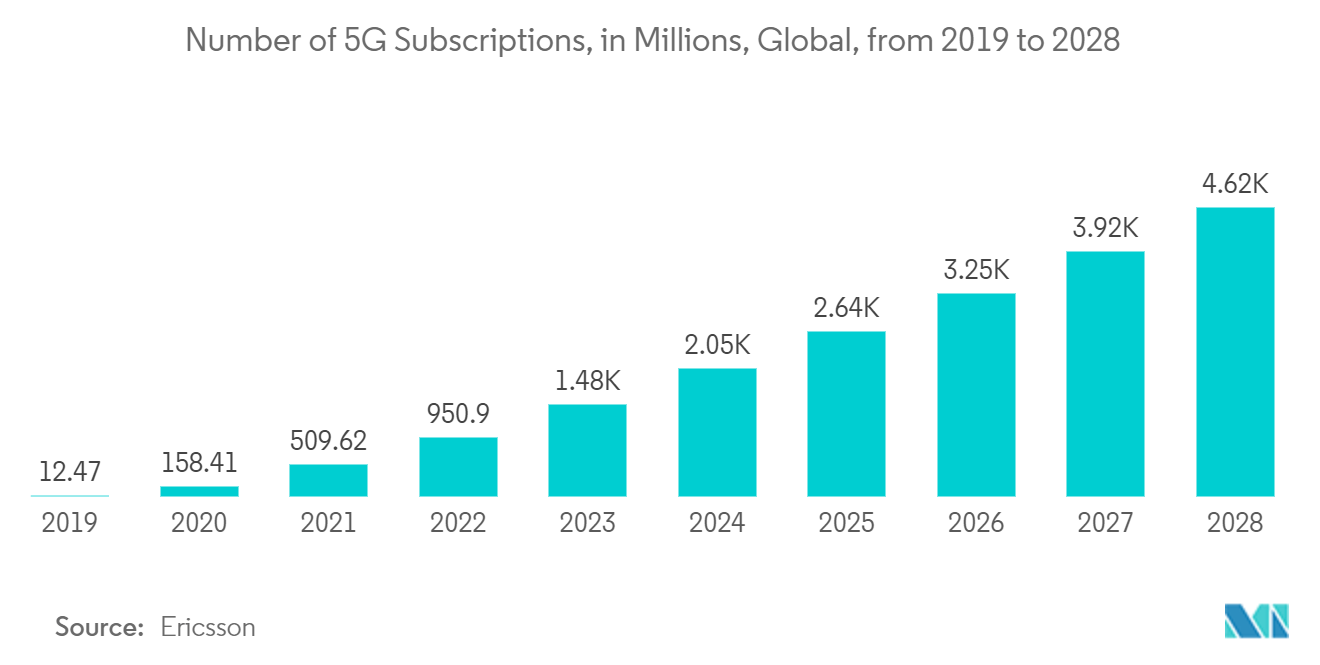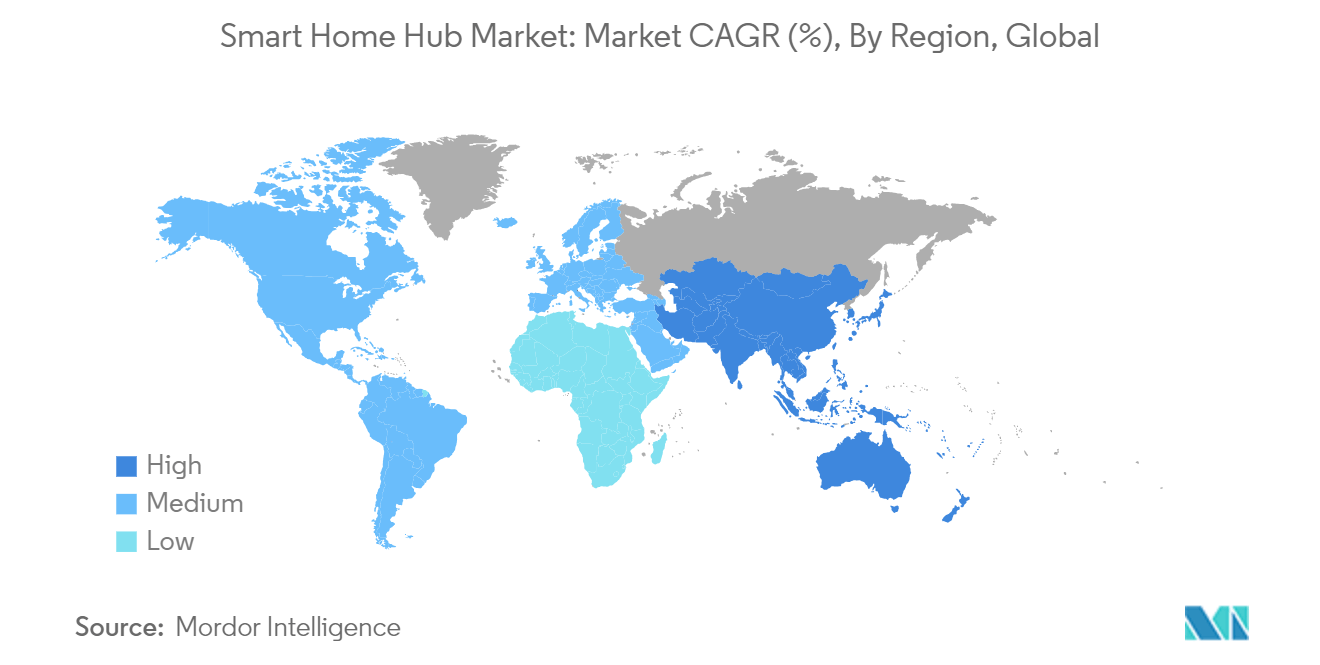Market Trends of Smart Home Hub Industry
Multi-Protocol Hubs Segment is Expected to Hold Significant Market Share
- Smart home devices utilize various communication protocols, including Wi-Fi, Bluetooth, Zigbee, and Z-Wave. Multi-protocol hubs are engineered to support these diverse protocols, enabling them to integrate and control a broad spectrum of smart home devices, irrespective of the communication standard. This adaptability and compatibility render multi-protocol hubs appealing to consumers seeking a unified solution to oversee their varied smart home ecosystem.
- The smart home industry is witnessing increasing growth as consumers increasingly adopt connected devices, such as smart lights, thermostats, security systems, and appliances. Multi-protocol hubs provide a convenient way for users to control and automate these disparate devices through a single interface, simplifying the overall smart home experience. As the smart home market expands, the demand for multi-protocol hubs that can seamlessly integrate and manage these diverse devices is expected to increase.
- The burgeoning smart home industry drives the global surge in 5G subscriptions. Projections from Ericsson suggest this momentum will persist, with subscriptions expected to reach approximately 4.7 billion by 2028. Due to its ultra-low latency, 5G enables real-time control for crucial smart home functions, such as security systems, home automation, and emergency alerts. Multi-protocol hubs harness this low latency, guaranteeing swifter and more reliable control over connected devices, elevating the entire smart home experience.
- Smart home technology is increasingly evolving, with new devices and protocols constantly emerging. Multi-protocol hubs are designed to be more future-proof, as they can adapt to support new protocols and devices as they become available. This scalability allows consumers to expand their smart home systems over time without replacing their central hubs, making multi-protocol hubs a more attractive long-term investment.
- Multi-protocol hubs are often considered vendor-neutral solutions, as they can work with devices from various manufacturers and ecosystems. This neutrality appeals to consumers who want to avoid being locked into a specific smart home platform or brand, giving them more flexibility in their device choices. Additionally, it provides a centralized interface for controlling and automating all smart home devices, simplifying the user experience. This unified control and management can make it easier for users to set up, configure, and maintain their smart home systems, leading to higher adoption and user satisfaction.

North America is Expected to Hold Significant Market Share
- The North American region, particularly the United States, leads in adopting smart home technologies. This is highlighted by the early introduction of pivotal products such as the Amazon Echo and Google Home smart speakers, functioning as central smart home hubs. Major players like Apple, Google, and Amazon have consistently dominated the North American smart home landscape, bolstering consumer awareness and adoption rates. Additionally, the region's smart home technology sector has witnessed a flurry of mergers, acquisitions, and partnerships, underscoring the market's maturation.
- In May 2024, the U.S. Bureau of Economic Analysis reported a 0.5% increase in the country's disposable personal income from the previous month. The U.S. boasts one of the highest household disposable incomes in the world. This robust purchasing power allows North American consumers to invest in premium-priced smart home technologies, such as smart home hubs, which often come at a premium compared to traditional home automation solutions. Furthermore, the tech-savvy nature of many North American consumers, especially in urban and suburban locales, amplifies their eagerness to embrace the latest smart home innovations.
- Further, across the United States, numerous states and municipalities have rolled out incentive programs and tax credits to promote the uptake of energy-efficient smart home technologies, notably smart home hubs. For instance, according to the California state government, the Golden State Rebate Program offers up to USD 75 instant rebate for smart thermostats that seamlessly integrate with these hubs. Moreover, various building codes and energy efficiency regulations in North America now mandate specific smart home features, bolstering the push for smart home hubs.
- Additionally, the region boasts a robust broadband internet infrastructure. The extensive and dependable internet connectivity facilitates the smooth integration and remote management of smart home devices via smart home hubs. Leading telecom companies, including Verizon, AT&T, and Comcast, vigorously champion the uptake of smart home technologies, like smart home hubs, within their bundled service packages.


